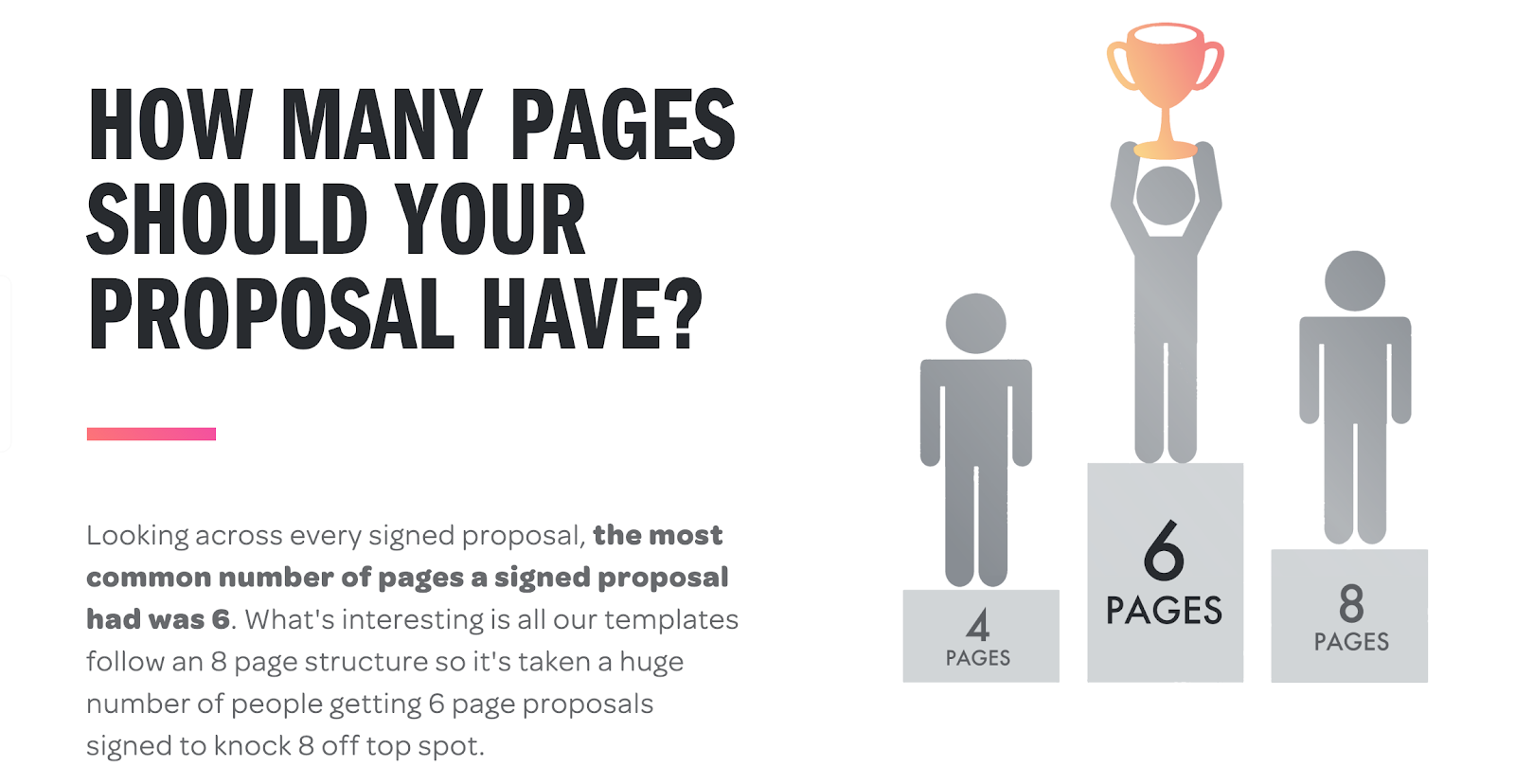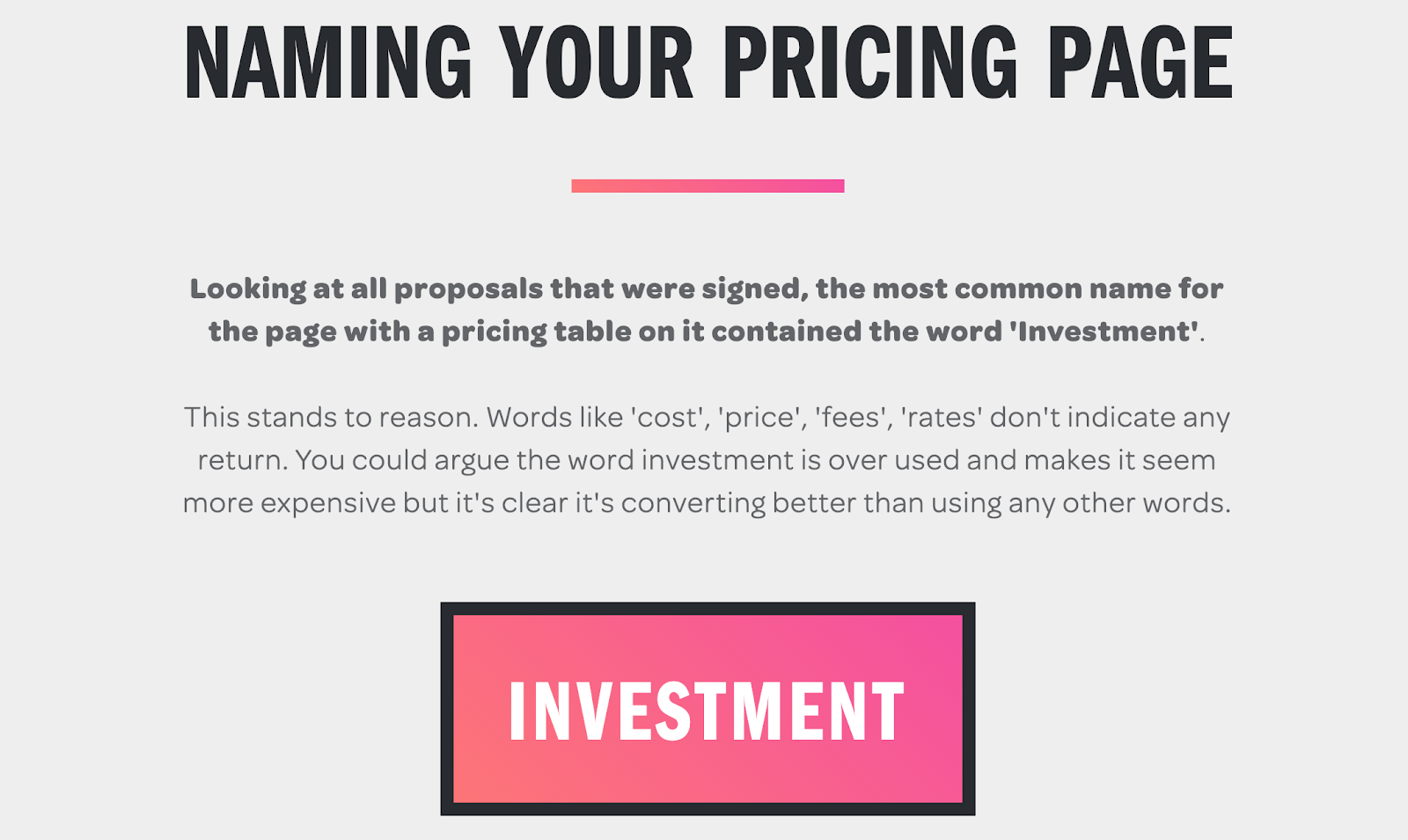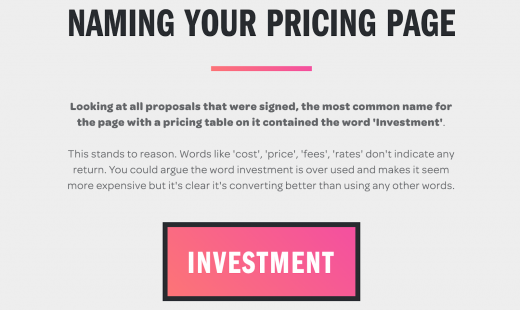A Definitive Guide on How to Write a Business Proposal in 2019
— March 8, 2019
You suddenly feel like someone pulled the rug from under your feet. A proposal, again? Alright, you say, hoping to whip up another 10-page essay as soon as possible to close the deal.
The fact is, many people dislike proposals, even though they’re a necessary part of the sales process. They take time, which you’d rather spend chasing more leads and closing deals.
Writing great proposals is no rocket science, and there’s a way that you can do it quickly, efficiently and with guaranteed results. Here’s how to get started.
Some data from previous research
For the most part, proposals didn’t receive the attention they deserve in the world of sales and marketing, but the recent report from Better Proposals revealed some interesting facts about the best-performing proposals.
Here are just a few of them:

- Proposals with a cover convert 44.7% better than those without them
- If your proposal is printed, it’s 45% less likely that it will be signed
- The best number of pages for your proposal is between 6 and 8
- The best time to send your proposal is within the first 24 hours from contact with the client: it increases your chances of singing by 25.9%
- Word choice matters: using the words investment or ROI for the pricing section gets much better results than naming it simply pricing
For more info on best practices in proposals, you can check out the report here.
Come up with a template
Ask some of the most successful businesses out there about their proposals – the majority will tell you that they spend less than half an hour of each. They don’t have some superb extraterrestrial talent – they just use templates.
If you consistently offer the same type of service or product, simply create a proposal template which you can re-use, just changing some copy and design elements. That way, you’ll spend a fraction of the time on writing compared to before. It doesn’t matter if you’re writing from scratch or using proposal management software, templates make the job significantly easier.
All great business proposals have similar elements – which we’ll discuss in the next chapter. Before that, you need to address your clients’ most commonly asked questions and make sure the answers are always there.
If you’re an experienced salesman, you know what these questions are since you get them all the time. For example, if you’re offering design services, one of the most common questions will be on how many revisions the client gets and what type of collateral is included in the service.
On the other hand, if you build websites, the client might want to know if the service includes maintenance and for how long. In essence, take note of your most frequently asked question and address them in the proposal, before the client even gets a chance to ask them. Let’s now move on to the elements of a great business proposal.
The introduction
You may not be aware of it, but this will be the most read part of your proposal. The majority of your clients will read it and head straight to the part where they sign. With this in mind, make sure you write a damn good introduction.
Some things you should include in the intro: who you are, what you do, how you address the client’s specific problems.
Here’s the kicker — you won’t be able to know any of this if you haven’t talked to the client. Unless you’ve had a call or meeting to find out their pain points, needs and desires, your introduction will fall flat and end up unsigned.
To really nail your business proposals every time, make sure to have a meeting beforehand and learn as much as possible about your client. When you know how they breathe, sit down and write the introduction.
If your proposals don’t get signed, there could be several reasons, but the introduction is where most people get it wrong. Because they don’t know the client and their specific pain points, they write the proposals focusing on the wrong aspect of work. Make sure the sales team is heavily involved in this part of the proposal and you should be good to go.
Detailed specification
By this time, you will likely lose a good chunk of your readership. No reason to start slacking, as this section is where you present exactly how you solve the client’s problem. If it’s a website design, explain which technologies you’ll be using, who will do the framework, design, copy, UX and UI and what the finished website is supposed to look like.
What does this section accomplish? Two things.
First, you’ll be able to clear any doubts by being as specific as possible. Second, if things go bad, you can refer to this section and clear any doubts. If you state something in this section – make sure you can own up to it and get the job done. Think of this section as a way to hold yourself accountable, to yourself and the client.
Timeline
This is one of the most important element of a high-converting business proposal, which is also frequently missing. In this section, let the client know when you’ll be able to deliver the services or good you’re offering. Just like the previous section, both you and the client can refer to this section in case of any problems.
During your initial call or meeting, pay attention to whether the client has any upcoming events or deadlines and align your timelines with them – and mention it in this section.
Proof
There’s no better way of showing your client that you can do or deliver something than by giving an example. In this section, show proof that you’ve done work similar to that in the project before.
Make sure the proof you’re giving is as close to the client as possible. For example, if you’re doing a website for a real estate agency, show off specific examples of other realtor websites you’ve done.
When it comes to the type of proof, sky’s the limit. This can be a case study, testimonial, detailed description, social proof, video – anything that comes to mind.
Price
The people who skipped everything except the introduction will most likely land here, as this is the second most important part of your proposal. There are several things to keep in mind here.
First, charge by the value, not by the hour or some other metric. For example, many copywriters charge by the word. Instead, charge by deliverables, i.e. the finished product.
Second, mind the wording. No matter who’s on the other line, the word ‘price’ means that they’re spending money. Instead, make them think that they are investing it and getting something in return.

You can achieve this by naming your pricing section something like ‘investment’ or ‘ROI’. These words will let your client know that they are investing instead of wasting their hard-earned cash.
The guarantee
How does the client know that what you’re promising in the proposal will actually happen and that you’ll fulfill all of your claims? Well, they can take your word for it offer them a guarantee.
The idea of a guarantee is a controversial one, because it means that you’re making a calculated risk every time. However, it’s another way to nudge the client along into committing and signing the proposal.
There are numerous ways to make a guarantee. For example, if you’re an agency that builds websites, you can promise free maintenance for 3 months if you don’t complete a website redesign in the timeline given in the proposal. Make sure you are as realistic with your guarantees as you are with your timeline and detailed specification and you’re good to go. Just like any business, aim to underpromise and overdeliver and you’ll never have to worry about guarantees.
The next steps
Okay, by this point the client knows almost everything about your offer. Unless they have any additional questions, they’re ready to seal the deal and you can walk away happily with another new client… That is, if you let them know exactly what to do.
Once the guarantee is done, make sure you give detailed instructions on what the client needs to do to make the next step.
This could be a process similar to this one:
- Sign the proposal
- Receive an invoice for the deposit payment
- First kick-off call with the agency
- Etc.
Whichever the case is, don’t leave the client hanging and wondering what they need to do next. Spell it out for them so they know which actions to take and what to expect once they do so. In fact, there are proposal software tools that let the client sign and pay directly within the proposal, without leaving it. Needless to say, this increases the chances of signing significantly.
Terms and conditions
You may think that this section is unnecessary after everything that’s previously mentioned, but it’s the best way to close off an excellent business proposal, so you can clear any doubts that the client may have before finally signing.
If you’re new to writing business proposals, you also may think that it will hurt your chances of closing, as the client could get scared away. In fact, this step will make you seem a tad more professional and inspire confidence, even if you’re a one-man operation.
… And you’re all set
If you’ve used all of the elements mentioned above, you should be able to write winning proposals over and over again, no matter your industry or what type of services or goods you’re selling.
Finally, remember that the first key of writing great proposals is to prepare a great proposal template which you can edit instead of writing new templates for each client.
Instead of writing the proposals out in a text processor, you can also use a proposal management software. If you’re looking for a solution that’s proven to work, check out Better Proposals so you can spend less time writing proposals and more time finding your ideal clients.
Business & Finance Articles on Business 2 Community
(59)


